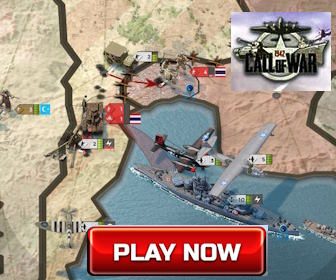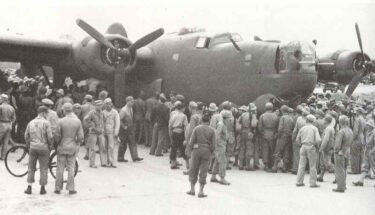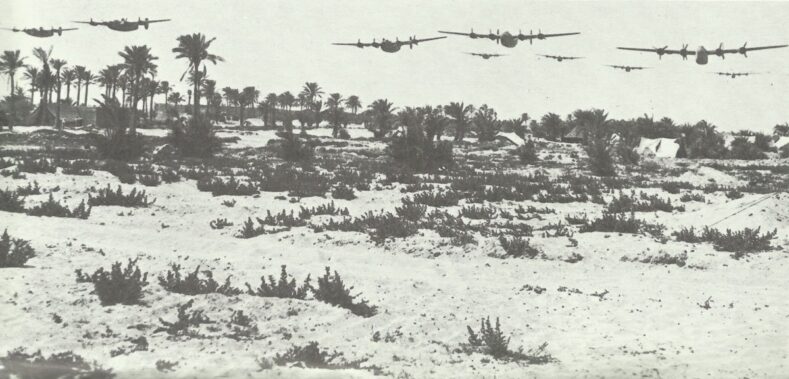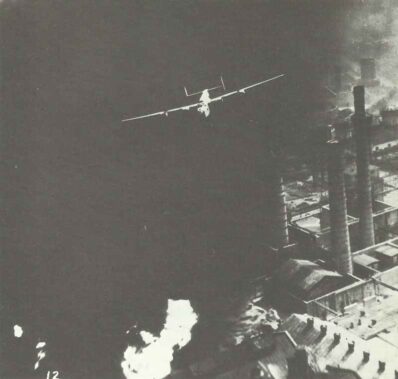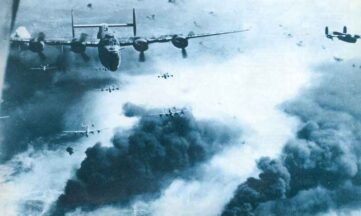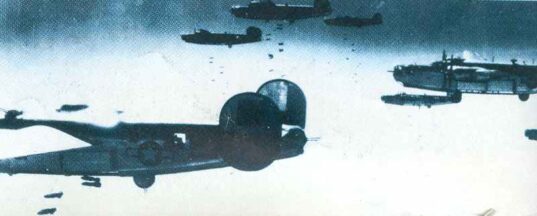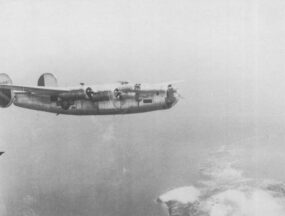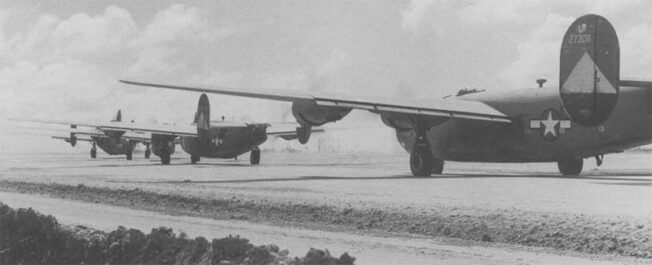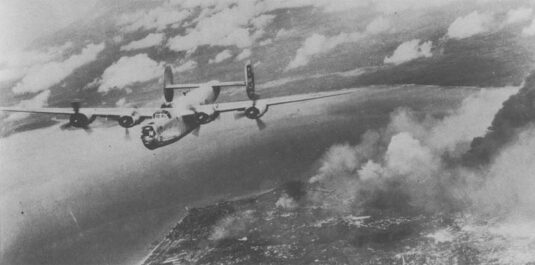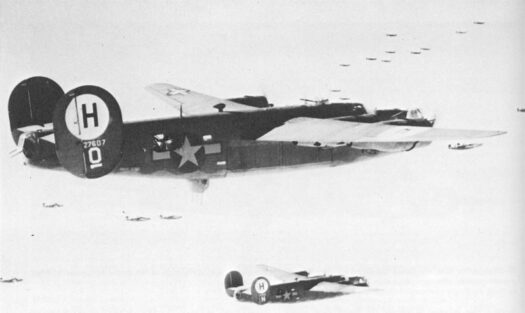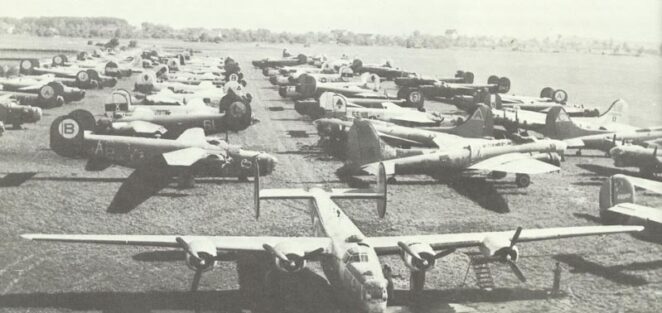US heavy long-range bomber Consolidated Vultee Model 32 B-24 Liberator.
History, development, service, specifications, pictures and 3D model.
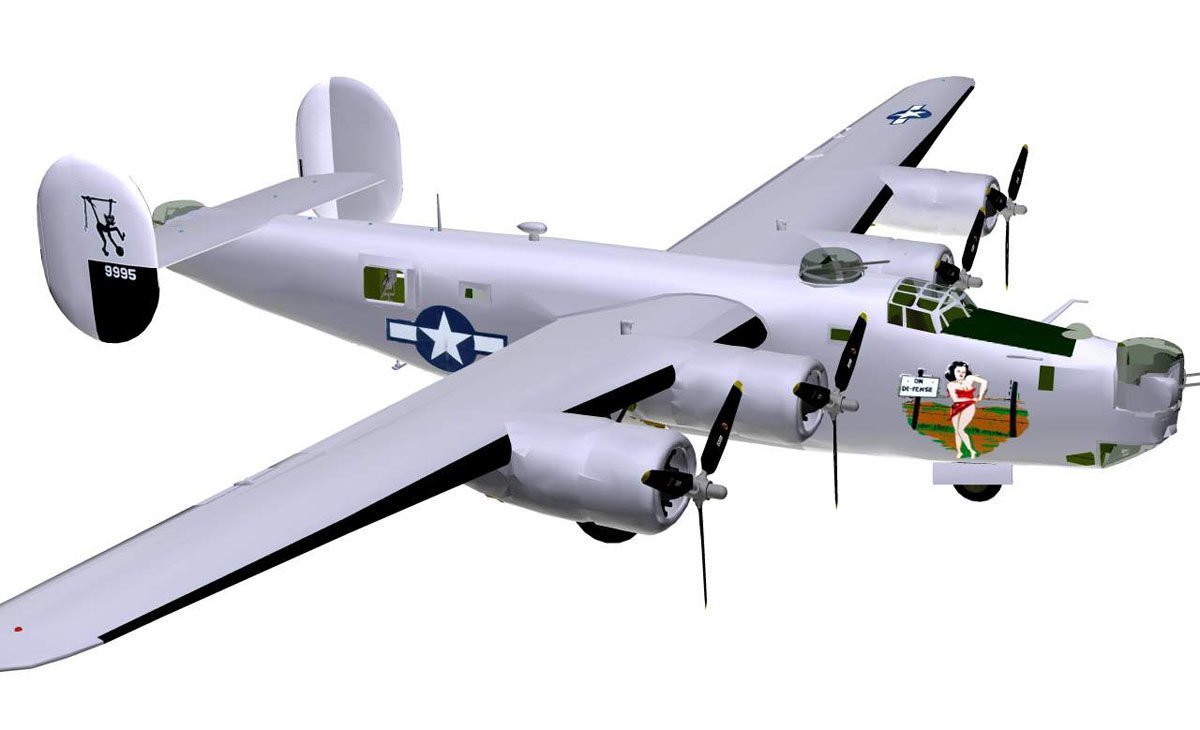
Consolidated Vultee Model 32 B-24 Liberator
Type: Heavy long-range strategic bombers.
History:
Table of Contents
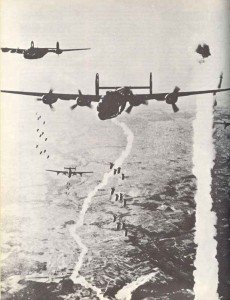
With production totaling 18,482 units, the B-24 Liberator was the most numerous U.S. combat type of WW2. The B-24 served in the thick of the fighting on every front and in a variety of roles, including bombing, maritime reconnaissance, anti-submarine warfare and transport. But the type’s major contribution was as a bomber, especially in the Pacific. In three years of operations B-24s dropped some 635,000 tons of bombs and downed 4,189 enemy aircraft. Although crews preferred the B-17 Fortress because it was less vulnerable, the Liberator proved to be an excellent and versatile combat aircraft. Apart from Consolidated, several other companies built Liberators. A total of 1,694 were delivered directly to the Royal Air Force for service with Coastal and Bomber Commands.
The preliminary studies which gave rise to the B-24 began early in 1939, when the Consolidated Aircraft Corporation was asked by the U.S. Army Air Corps for a new heavy bomber. What was required was a more modern aircraft with better speed, range and altitude performance than the Boeing B-17 Fortress, which was already in production.
Head designer Isaac M. Laddon settled on a high-wing monoplane with twin fins and rudders. The wing was certainly the most original and advanced feature of the Laddon design. Consolidated had recently begun to incorporate Davis laminar-flow contours into its designs, and did not hesitate to apply these advances to the new bomber. The Liberator’s high-aspect-ratio wing conferred an impressive payload, climb and range performance.
A contract signed on March 30, 1939, called for a full-size model and a prototype; the latter first took to the air on December 29 of that year. The new bomber had a deep fuselage and a large bomb bay with sliding doors. The undercarriage was unusual for the time: a tricycle arrangement in which the main gear retracted into the wing. The type was originally powered by four Pratt & Whitney R-1830-33 engines with two-stage mechanical superchargers, subsequently replaced by exhaust-driven turbo-superchargers.
Seven pre-production examples were built, followed in 1940 by a first order for 36 aircraft. Only nine of these were built, the rest being produced as B-24Cs. The B-24C had turbo-supercharged Pratt&Whitney R-1830s, which necessitated structural modifications to the engine nacelles. The armament was also increased. The first significant version, however, was the B-24D, for which large orders were received in 1940. Further orders brought total production of this variant up to 2,738 units. Such was the demand for the B-24 that the original production facilities had to be expanded.
Consolidated built B-24s at San Diego and then added a second assembly line at Fort Worth, Texas. Beginning with the B-24D, Douglas, Ford and North American also built Liberators.
Beginning in April 1942, the B-24D was the first Liberator to go into combat. Most of the Liberator’s early combat career centered in the Middle East and Pacific theaters. The next version was the B-24E, which bad different engines and propellers. Then came the B-24G. Beginning with the 26th B-24G, a substantial modification was introduced. A mechanically operated nose turret was installed, thus providing extra defense against frontal attack, to which the B-24 had been particularly vulnerable. This arrangement was standard in all subsequent versions.
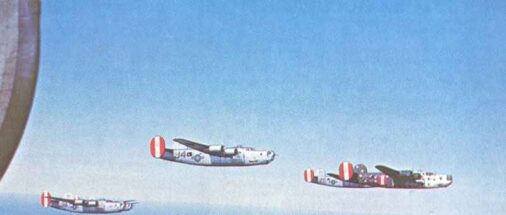
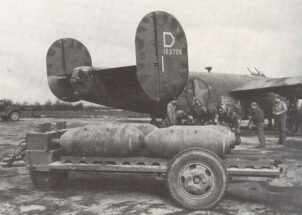
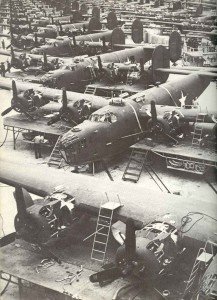
A total of 3,100 B-24Hs were produced by Consolidated, Convair, Douglas and Ford. 1943 saw the appearance of the most numerous B-24 variant, the B-24J with new engine controls, a new bomb sight and changes in the fuel and control systems. The final versions, the B-24L and B-24M, had improvements in armament. By May 31, 1945, totals of 1,667 Ls and 2,593 Ms had been built.
Among the more important experimental variants and conversions of the B-24 were the photographic-reconnaissance F-7; the C-87 transport; the AT22, a flying classroom for navigator training; and the C-1O9 transport/tanker. The Liberator XB-41, a B-24D modified in 1942 for service as a heavy bomber escort, never got beyond the prototype stage. It carried fourteen 12.7 mm machine guns.
Users: Australia, Brazil, Canada, China, Czechoslovakia, France, India, Italy (CB), New Zealand, Portugal, South Africa, Soviet Union, Turkey, UK, U.S.A.
Animated 3D model of B-24 J Liberator
Specifications for Consolidated B-24 D Liberator
Specifications:
Consolidated B-24 D Liberator | specification |
|---|---|
Power plant | 4 x 1,200hp Pratt&Whitney R-1830-43 Twin Wasp, 14-cylinder radial, air-cooled |
Accommodation | 8 - 10 |
Wing span | 110 ft |
Length overall | 66 ft 4 in |
Height overall | 17 ft 11 in |
Weight empty | 35,000 lb |
Weight loaded | 60,000 lb |
Max level speed | 303 mph |
at height | 25,000 ft |
Initial climb | 900 ft/min |
Service ceiling | 32,000 ft |
Range | 2,850 miles (with 5,000 lb bomb load) |
Armament:
Consolidated B-24 D Liberator | specification |
|---|---|
Weapon turrets | 3 electrically operated turrets (Martin turret dorsal, Briggs-Sperry retractable ventral 'ball' and Consolidated or Motor Products tail) each with 2 x 0.50 Browning MGs (1100 rpm, velocity 2500 ft.sec) |
Single guns | 2 x single 0.50 Browning MGs in manual waist positions and one manual MG in nose |
MGs total | 9 |
Bomb load | 2 bomb bays with roll-up doors with vertical racks on each side of central catwalk for up to 8,800 lb of bombs |
Service statistics:
Consolidated B-24 Liberator | figures |
|---|---|
First flight (prototype) | 29 December 1939 |
Service delivery (B-24C) | March 1941 |
Combat service (B-24D) | April 1942 |
Production delivery (B-24J) | August 1943 |
Termination of production | 31 May 1945 |
Unit cost | $ 297,627 |
Total production figure | 2,738 (B-24D), 18,482 (B24 C-M), 19,203 (with R2Y transports) plus 1,800 aircraft delivered as spares |
Number of US Sorties, Europe 42-45 | 226,775 |
US Bomb Tonnage, Europe 42-45 | 452,508 t |
US Lost in Combat, Europe 42-45 | 3,626 |
Enemies US claimed destroyed, Europe 42-45 | 2,617 |
References and literature
The Encyclopedia of Weapons of World War II (Chris Bishop)
Combat Aircraft of World War II (Bill Gunston)
Technik und Einsatz der Kampfflugzeuge vom 1. Weltkrieg bis heute (Ian Parsons)
Das große Buch der Luftkämpfe (Ian Parsons)
Luftkrieg (Piekalkiewicz)
Flugzeuge des 2. Weltkrieges (Andrew Kershaw)
World Aircraft World War II (Enzo Angelucci, Paolo Matricardi)



